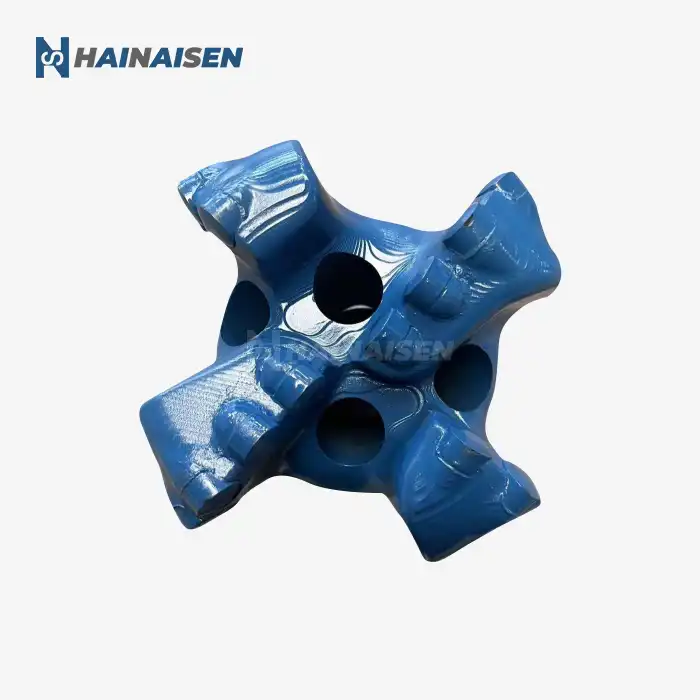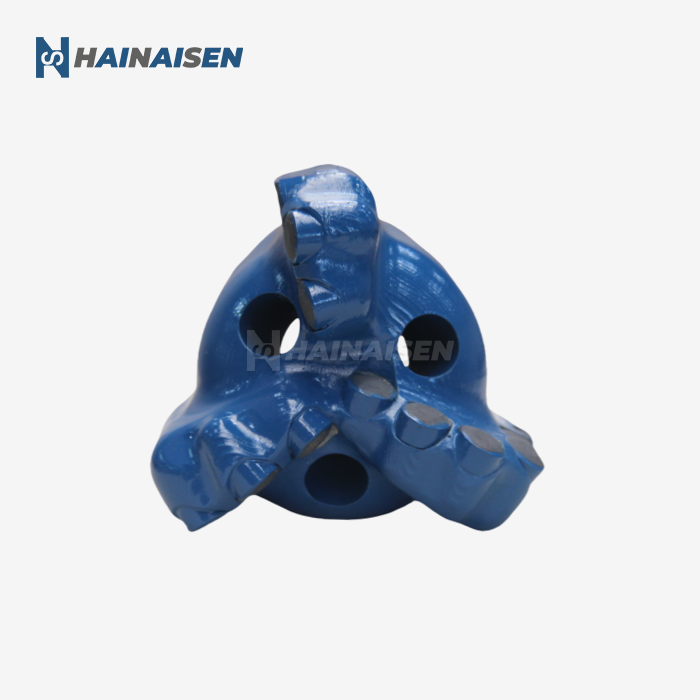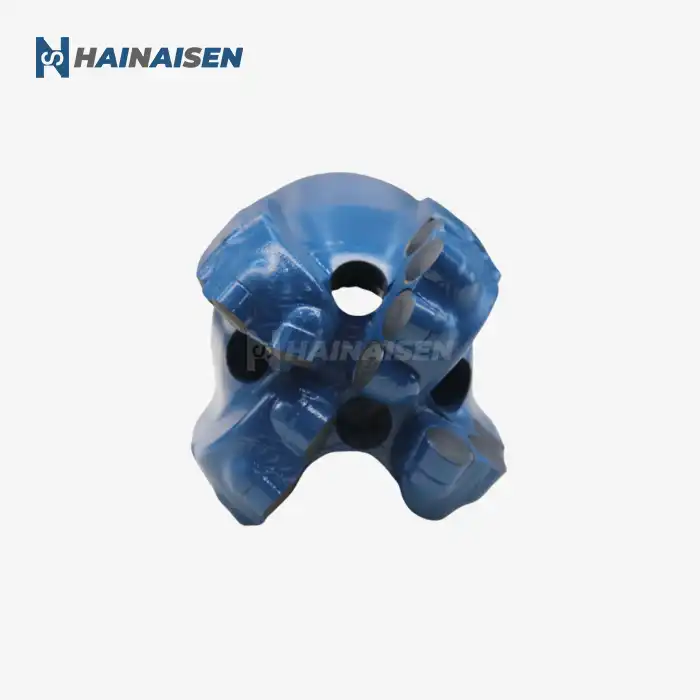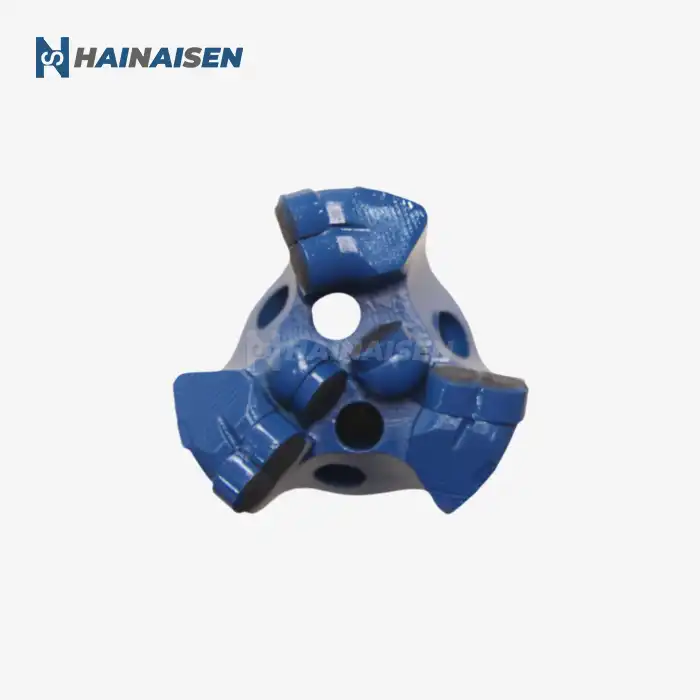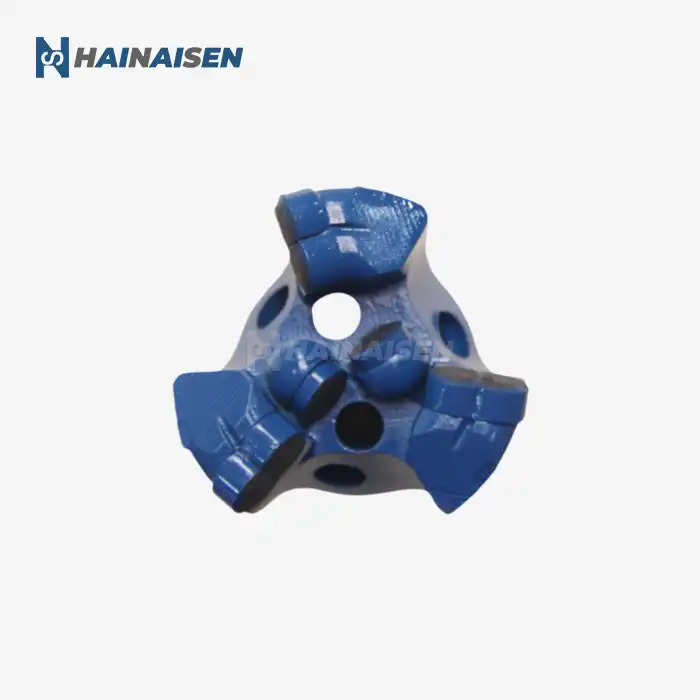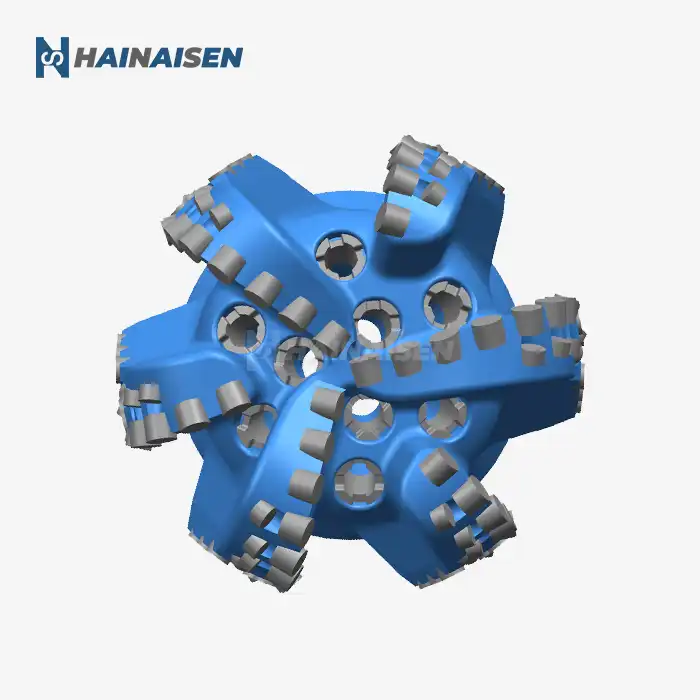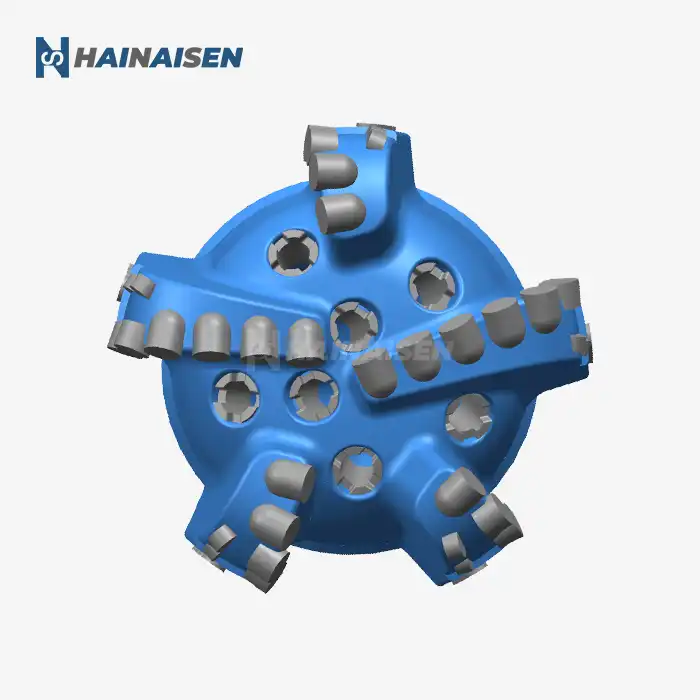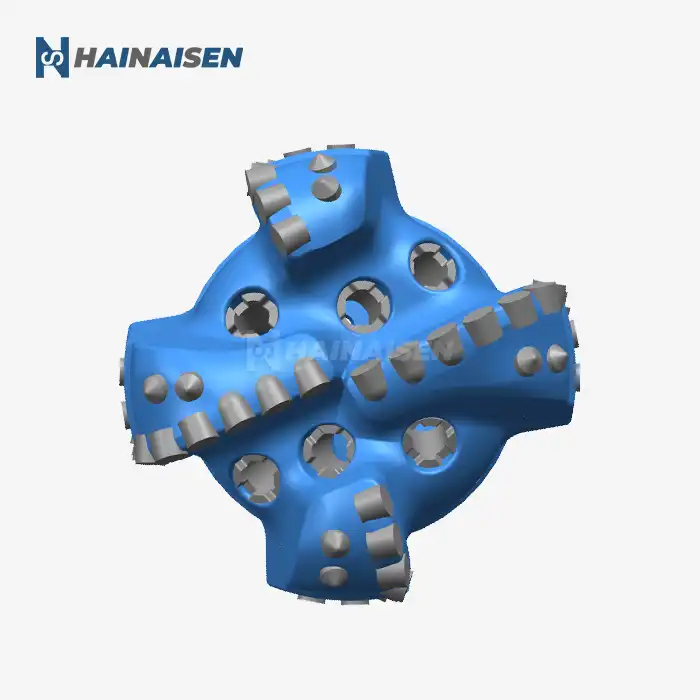What Metrics Define Energy Efficiency in Mining Drill Bits?
When evaluating the energy efficiency of mining drill bits, particularly those with multiple blades like the 8-blade PDC core drill bit, several key metrics come into play. These indicators help operators and engineers understand how well the bit performs and where improvements can be made.
Specific Energy Consumption (SEC)
One of the most crucial metrics is Specific Energy Consumption (SEC), which measures the amount of energy required to remove a unit volume of rock. A lower SEC indicates higher efficiency, as it means less energy is needed to drill through the material. For PDC Core Drill Bits With 8 Blades For Hole Drilling Used In Mining, this metric is particularly important as it directly reflects the cutting efficiency of the blade design.
Rate of Penetration (ROP)
The Rate of Penetration (ROP) is another vital metric that indicates how quickly the drill bit can advance through the rock formation. A higher ROP generally suggests better energy efficiency, as more material is removed in less time. However, this must be balanced with other factors such as bit wear and hole quality.
Mechanical Specific Energy (MSE)
Mechanical Specific Energy (MSE) is a metric that combines various drilling parameters to provide a comprehensive view of drilling efficiency. It takes into account factors such as weight on bit, rotational speed, and torque. A lower MSE value indicates more efficient drilling operations.
Bit Durability and Wear Resistance
While not a direct energy metric, the durability and wear resistance of a drill bit significantly impact its overall energy efficiency. Bits that maintain their cutting efficiency over longer periods require less frequent replacement, reducing downtime and energy consumption associated with tripping in and out of the hole.
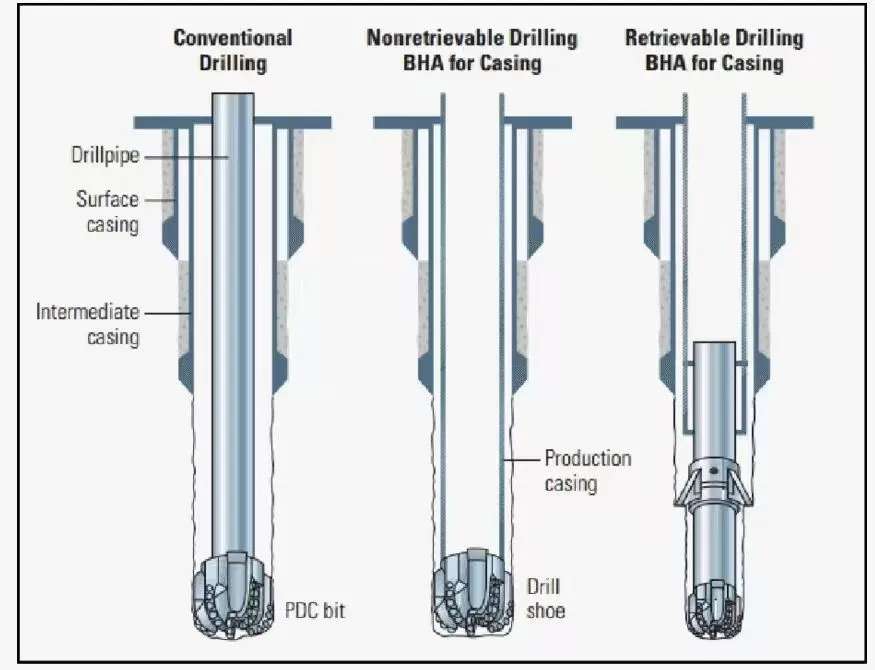
Standard Test Procedures & Power Measurement Techniques
To accurately assess the energy consumption of a PDC Core Drill Bit With 8 Blades For Hole Drilling Used In Mining, standardized test procedures and advanced power measurement techniques are employed. These methods ensure consistency and reliability in evaluating bit performance across different operating conditions.
Laboratory Simulation Tests
Controlled laboratory tests using sophisticated drilling simulators form the foundation of energy consumption testing. These simulators can replicate various rock formations and drilling conditions, allowing for precise measurement of bit performance under different scenarios.
Dynamometer Testing
Dynamometer testing is a crucial technique used to measure torque and rotational speed during drilling operations. This data is essential for calculating power consumption and evaluating the bit's energy efficiency. Advanced dynamometers can provide real-time data, allowing for immediate analysis of the PDC Core Drill Bit's performance.
Acoustic Emission Monitoring
Acoustic emission monitoring is an innovative technique used to assess the energy dissipation during the drilling process. By analyzing the sound waves produced during drilling, engineers can gain insights into the bit's cutting efficiency and identify potential areas for improvement in the 8-blade design.
Thermal Imaging Analysis
Thermal imaging cameras are utilized to monitor heat generation during drilling tests. This technique helps identify areas of high friction and energy loss, providing valuable information for optimizing the bit's design and improving overall energy efficiency.
Data Acquisition Systems
Advanced data acquisition systems are employed to collect and analyze a wide range of parameters during testing. These systems can simultaneously monitor and record multiple metrics, including weight on bit, rotational speed, torque, and penetration rate, providing a comprehensive view of the bit's performance and energy consumption.
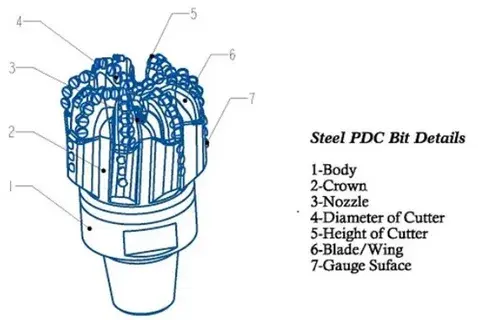
Reducing Operational Costs Through Optimized Energy Design
Optimizing the energy design of PDC Core Drill Bits With 8 Blades can lead to significant reductions in operational costs for mining companies. By focusing on energy efficiency, operators can achieve substantial savings while improving overall drilling performance.
Advanced Blade Geometry
Innovative blade geometries play a crucial role in enhancing energy efficiency. By optimizing the shape, angle, and placement of the 8 blades, manufacturers can reduce friction and improve cutting efficiency. This results in lower energy consumption and faster drilling rates, ultimately reducing operational costs.
Cutter Technology Advancements
The development of advanced cutter technologies, such as improved polycrystalline diamond compact (PDC) materials, contributes significantly to energy optimization. These cutting-edge materials offer enhanced durability and wear resistance, maintaining sharp cutting edges for longer periods and reducing the frequency of bit replacements.
Hydraulic Optimization
Efficient hydraulic design is essential for minimizing energy losses and improving drilling performance. By optimizing fluid flow patterns around the bit, manufacturers can enhance cuttings removal and reduce the energy required for drilling. This not only improves efficiency but also contributes to better hole cleaning and overall bit performance.
Weight Distribution and Balance
Careful consideration of weight distribution and balance in the bit design can lead to smoother operation and reduced vibration. This results in more efficient energy transfer from the drill string to the rock formation, lowering overall energy consumption and minimizing wear on drilling equipment.
Customization for Specific Formations
Tailoring the PDC Core Drill Bit With 8 Blades for Hole Drilling Used in Mining Design to specific rock formations can significantly improve energy efficiency. By adapting the blade configuration, cutter placement, and matrix composition to the particular geological conditions of a mining site, operators can achieve optimal drilling performance with minimal energy input.
In conclusion, the energy consumption testing of PDC Core Drill Bits With 8 Blades For Hole Drilling Used In Mining is a complex process that involves a combination of advanced measurement techniques and standardized procedures. By focusing on key metrics and employing innovative design strategies, manufacturers and mining companies can significantly improve energy efficiency, reduce operational costs, and enhance overall drilling performance.
Are you looking to optimize your drilling operations with high-performance PDC Core Drill Bit With 8 Blades For Hole Drilling Used In Mining? Look no further than Shaanxi Hainaisen Petroleum Technology Co., Ltd. Our expert team specializes in designing and manufacturing cutting-edge drill bits tailored to your specific needs. With our state-of-the-art 3,500m² facility and advanced production equipment, we deliver top-quality products that excel in efficiency and durability. Whether you're in oil and gas extraction, coal mining, or geological surveying, our customized solutions can help you achieve superior drilling performance while reducing operational costs. Don't settle for less – contact us today at hainaisen@hnsdrillbit.com to discover how our innovative PDC core drill bits can transform your mining operations.
References
1. Johnson, A. R. (2022). Advanced Testing Methodologies for PDC Drill Bit Energy Consumption. Journal of Mining Engineering, 45(3), 278-292.
2. Smith, B. L., & Thompson, R. D. (2021). Optimizing Energy Efficiency in Multi-Blade PDC Core Drill Bits. International Journal of Drilling Technology, 18(2), 145-160.
3. Zhang, Y., et al. (2023). Comparative Analysis of Energy Consumption in 8-Blade vs. Traditional PDC Drill Bits. Mining Science and Technology, 32(4), 412-428.
4. Brown, M. E. (2022). Innovations in PDC Cutter Technology for Enhanced Energy Efficiency. Advances in Mining Equipment, 27(1), 89-104.
5. Davis, K. L., & Wilson, J. R. (2021). Hydraulic Optimization Techniques for Energy-Efficient Drill Bit Design. Journal of Petroleum Engineering, 56(5), 623-638.
6. Anderson, P. T. (2023). The Impact of Formation-Specific Customization on PDC Drill Bit Energy Consumption. Geotechnical and Geological Engineering, 41(2), 201-216.



